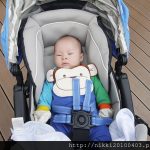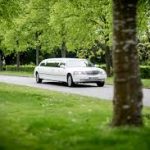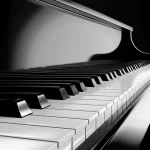In the fast-paced world of Hong Kong’s electronics and manufacturing sectors, choosing the right magnet is more than a technical decision—it’s a strategic move. Whether you’re designing motors, sensors, or compact consumer devices, understanding the difference between a sintered NdFeB magnet and a bonded NdFeB magnet can dramatically impact performance, cost, and durability. This article dives deep into both materials, helping Hong Kong engineers, product developers, and procurement teams make informed, SEO-optimized decisions.
Why Sintered NdFeB Magnet Dominates High-Performance Applications
The sintered NdFeB magnet is widely regarded as the strongest commercially available permanent magnet. In Hong Kong’s industrial landscape, where precision and power matter, the sintered NdFeB magnet is often the go-to choice for demanding applications. These magnets are produced through a powder metallurgy process, where neodymium, iron, and boron powders are pressed and sintered at high temperatures to form dense, high-energy magnets.
Hong Kong manufacturers rely on sintered NdFeB magnet solutions for electric motors, wind turbines, and medical imaging devices. The sintered NdFeB magnet offers exceptional magnetic strength, high coercivity, and excellent thermal stability. Its ability to maintain performance under extreme conditions makes it ideal for Hong Kong’s humid climate and high-load environments.
Bonded NdFeB Magnet: Flexibility Meets Efficiency
While the sintered NdFeB magnet excels in raw power, the bonded NdFeB magnet shines in versatility. Created by mixing NdFeB powder with a polymer binder and then compression or injection molding, the bonded NdFeB magnet offers design flexibility and cost efficiency. In Hong Kong’s consumer electronics and automotive sectors, the bonded NdFeB magnet is favored for its ability to be molded into complex shapes and thin profiles.
The bonded NdFeB magnet is lighter and more corrosion-resistant than its sintered counterpart. It’s commonly used in sensors, actuators, and miniature motors where space constraints and intricate geometries are critical. Hong Kong engineers appreciate the bonded NdFeB magnet for its ease of integration and consistent magnetic properties across batches.
Comparing Magnetic Strength: Sintered NdFeB Magnet Leads the Charge
When it comes to magnetic strength, the sintered NdFeB magnet clearly outperforms the bonded NdFeB magnet. With energy products reaching up to 52 MGOe, the sintered NdFeB magnet is ideal for high-torque motors and precision instruments. In contrast, the bonded NdFeB magnet typically offers energy products in the range of 5–12 MGOe, which is sufficient for low-power applications but not suitable for heavy-duty machinery.
Hong Kong’s robotics and automation industries often choose sintered NdFeB magnet components for their ability to deliver consistent force and responsiveness. The bonded NdFeB magnet, while less powerful, remains a popular choice for applications where weight, shape, and cost are more important than maximum magnetic output.
Thermal Stability and Environmental Resistance in Hong Kong Conditions
Hong Kong’s subtropical climate presents unique challenges for magnet performance. The sintered NdFeB magnet, although powerful, is sensitive to corrosion and requires protective coatings such as nickel or epoxy. Without proper treatment, the sintered NdFeB magnet may degrade in humid environments, which is a concern for outdoor or marine applications.
On the other hand, the bonded NdFeB magnet naturally resists corrosion due to its polymer matrix. This makes the bonded NdFeB magnet a safer choice for Hong Kong’s coastal installations and consumer devices exposed to moisture. However, the sintered NdFeB magnet still holds the edge in thermal stability, maintaining magnetic properties at temperatures up to 200°C, compared to the bonded NdFeB magnet’s typical limit of 150°C.
Manufacturing Complexity and Cost Considerations
Producing a sintered NdFeB magnet involves complex processes, including powder preparation, pressing, sintering, machining, and magnetizing. This results in higher production costs and longer lead times. In Hong Kong, where speed and budget control are crucial, the sintered NdFeB magnet is often reserved for premium applications.
Conversely, the bonded NdFeB magnet benefits from streamlined manufacturing. Injection molding allows for high-volume production with minimal waste, making the bonded NdFeB magnet a cost-effective solution for mass-market products. Hong Kong startups and SMEs often prefer the bonded NdFeB magnet for prototyping and consumer-grade devices due to its affordability and design flexibility.
Design Freedom: Bonded NdFeB Magnet Offers Creative Possibilities
One of the bonded NdFeB magnet’s greatest strengths is its ability to be molded into intricate shapes. Hong Kong’s electronics designers leverage this feature to create compact, lightweight components without compromising magnetic performance. The bonded NdFeB magnet can be integrated into PCB layouts, curved surfaces, and custom enclosures with ease.
While the sintered NdFeB magnet is limited to simpler geometries due to its brittle nature, it remains unmatched in applications requiring high magnetic flux. Hong Kong’s aerospace and defense sectors often choose sintered NdFeB magnet assemblies for their reliability and strength, despite the design constraints.
Recycling and Sustainability: A Growing Concern in Hong Kong
As Hong Kong moves toward greener manufacturing practices, the environmental impact of magnet production is under scrutiny. The sintered NdFeB magnet, due to its reliance on rare earth mining and energy-intensive processing, poses sustainability challenges. Recycling sintered NdFeB magnet materials is possible but complex.
The bonded NdFeB magnet, with its lower rare earth content and simpler production, offers a more sustainable alternative. Hong Kong’s eco-conscious manufacturers are increasingly adopting bonded NdFeB magnet solutions to reduce carbon footprints and comply with environmental regulations. While the sintered NdFeB magnet remains essential for high-performance needs, the bonded NdFeB magnet is gaining traction as a responsible choice.
Choosing Between Sintered NdFeB Magnet and Bonded NdFeB Magnet in Hong Kong
Ultimately, the decision between a sintered NdFeB magnet and a bonded NdFeB magnet depends on application requirements. Hong Kong engineers must weigh factors such as magnetic strength, thermal stability, corrosion resistance, cost, and design flexibility. For high-power, high-precision tasks, the sintered NdFeB magnet is the clear winner. For lightweight, complex, and cost-sensitive projects, the bonded NdFeB magnet offers unmatched versatility.
Hong Kong’s magnet suppliers often provide both sintered NdFeB magnet and bonded NdFeB magnet options, along with technical consultation to help clients choose the best fit. Collaborating with experienced vendors ensures that your magnet selection aligns with performance goals and budget constraints.
Conclusion: Sintered NdFeB Magnet and Bonded NdFeB Magnet Power Hong Kong’s Innovation
In a city driven by innovation, both the sintered NdFeB magnet and the bonded NdFeB magnet play vital roles. From skyscraper elevators to wearable tech, these magnets are embedded in the pulse of Hong Kong’s progress. Understanding their differences empowers engineers and decision-makers to build smarter, stronger, and more sustainable products.
Whether you’re scaling up production or refining a prototype, choosing between a sintered NdFeB magnet and a bonded NdFeB magnet is a pivotal step. With the right knowledge and supplier support, Hong Kong’s industries can continue to lead in performance, efficiency, and environmental responsibility—one magnet at a time.










